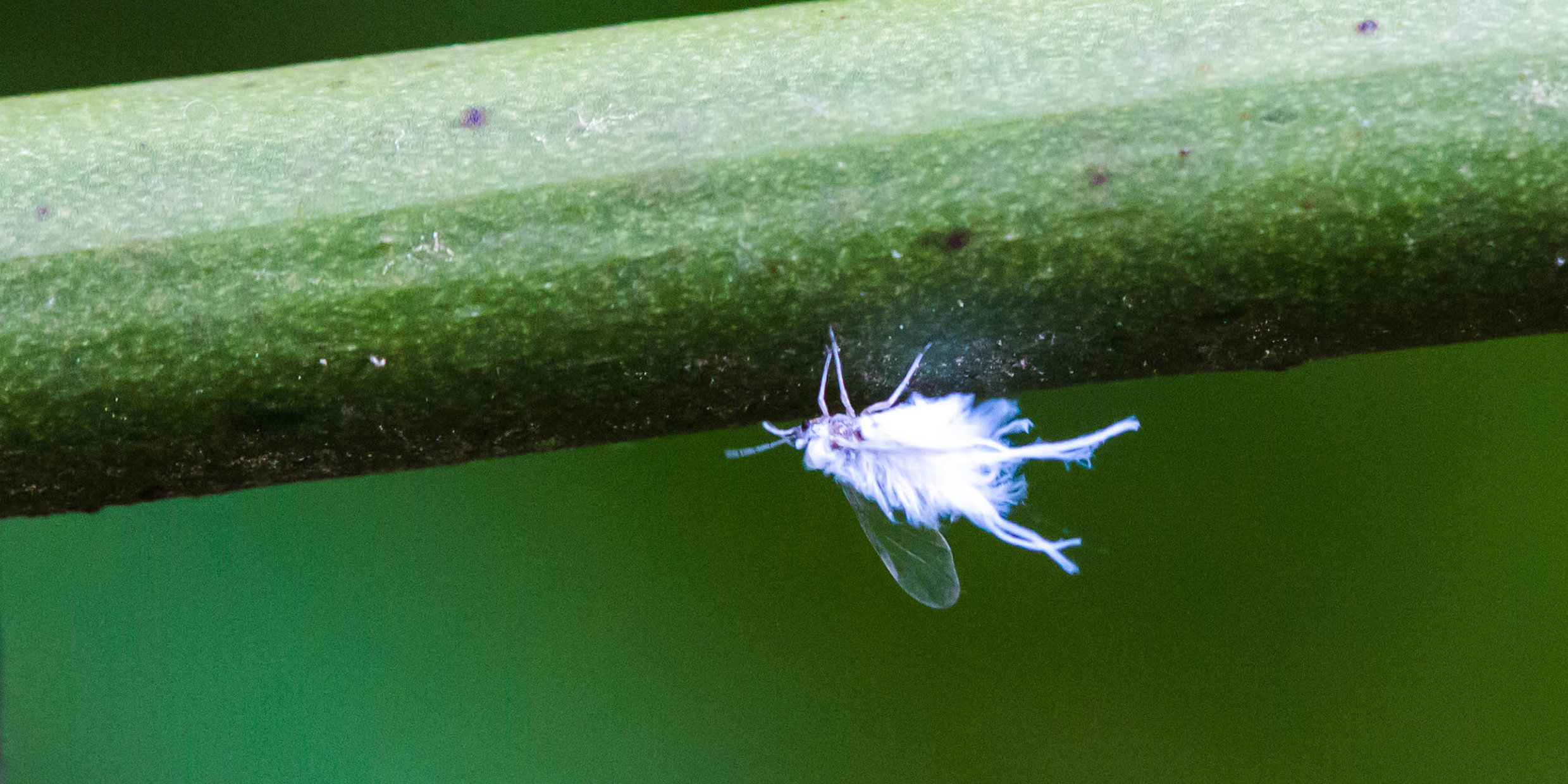Originally published 15 October 2002
“It is not easy to live in that continuous awareness of things which alone is true living,” the naturalist Joseph Wood Krutch wrote in The Voice of the Desert. Krutch was a middle-aged New York City drama critic and literature professor in the late 1940s when he re-read Thoreau’s Walden, became a born-again nature writer, and moved to the Arizona desert to live with cacti and tarantulas.
He wanted to live in continuous awareness of the natural world, and by the evidence of his books, he did just that.
Whether immersion in nature’s minutiae is alone “true living” is debatable. But he got this much right: It’s not easy.
I was thinking of Krutch’s remark the other day when I found a colony of woolly aphids on leaves and twigs beneath a beech tree in the deep woods — a million tiny white pom-poms waving in unison, like a field of cheerleaders at half-time.
I examined one of the aphids with a hand magnifier. Yep, under the fuzz was a tiny insect — six legs, eyes, antennae — about as big as a grain of salt; nondescript except for the tuft of white wool, excreted from spigots on the insect’s back, which was 10 times bigger than the bug’s body.
After a while, the woolly aphids quieted down. Then, if I touched a twig or leaf, ever so slightly, they all started waving their pom-poms again. Boola-boola. Sis-boom-bah.
I’ve never read a convincing explanation for why some species of aphids secrete these tufts of waxy wool. Are the insects hiding from predators? Or are they trying to make themselves conspicuous? Are they preparing to go airborne? Or are they just getting rid of excess body fluids? Heaven knows.
Aphids feed on tree sap, and, in addition to the wool, secrete a sweet substance called honeydew. Sometimes ants take aphids into their nests and tend them like cattle, milking the sweet liquid. The colony of aphids I found beneath the beech tree had made the ground slick with honeydew, and a slimy black fungus was living happily upon it.
Each spring, aphids hatch from whatever eggs have managed to survive the storms and chickadees of winter. The hatchlings are all female. Within days, they give live birth to more females. These quickly mature, and give birth to another generation. And so on, generation after generation. All without benefit of males.
Most of these aphid broods are wingless, but if a colony gets too big, a generation is born with wings, and these fly off to found another colony.
Aphids are easy prey, but wonderfully prolific. If it were not for predators — birds, wasps, ladybugs — each female that hatches in the spring might have billions of descendants by autumn. Their strategy for survival is to make more of themselves than any conceivable predators can possibly eat.
When fall comes and the weather cools, a generation is born that consists of both males and females. These mate and lay the eggs that will hatch the following spring. The task of this sexual generation is so specific that nature does not provide either the males or females with mouths. Forget eating. Have sex and die.
Such prodigious excess! Where could one find a more explicit demonstration of the meaning of life? Continuity. Survival of genes. An aphid is nature’s way of making more aphids. And more. And more. A hundred million insects die that one might mate and lay eggs.
As simple as that. The awful and wonderful logic of eat and be eaten. The divine handiwork of the god of waste.
Humans consider every human life precious — or at least we profess to do so. Nature has other ideas. No life without death. No beauty without terror. No evolution without the relentless harvest of the weak.
No wonder it’s not easy to pay attention to these things.
Can we lift ourselves out of the amoral logic of biology?
To find the answer, Joseph Wood Krutch went into the desert, not for 40 days and 40 nights, but for what was left of his life. He knew that humankind has become “the tyrant of the Earth, the waster of resources, the creator of the most prodigious imbalance in the natural order which has ever existed,” and he knew that we will cherish one another only when we cherish the world of which we are a part.
He wanted to find a meaning for human life in our oneness with other creatures, and in our unselfish stewardship of the planet. We are all in it together, he wrote, with the cacti and the tarantulas.
And the aphids and the ants and the ladybugs and the chickadees. The aphids I watched waving their pom-poms in the woods were celebrating something. If only we are wise enough to figure out what.



